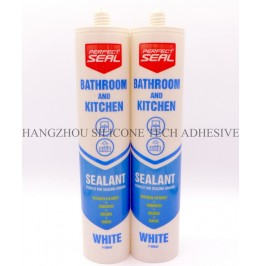Sealants play a crucial role in creating waterproof, airtight, or chemically resistant barriers in construction, automotive, and industrial applications. However, their durability is significantly influenced by the quality of water they interact with over time. Different water compositions—ranging from freshwater to saline or chemically treated water—can affect adhesion, flexibility, and resistance to degradation. Understanding these impacts helps optimize sealant selection and maintenance strategies.

Freshwater, commonly found in residential plumbing systems and natural environments, poses relatively mild challenges to sealants. However, even its neutral pH and low mineral content can influence performance under specific conditions.
In areas with hard freshwater (high calcium and magnesium content), sealants may accumulate mineral deposits over time. These deposits form a white, chalky layer on the surface, which can trap moisture and promote microbial growth. While the minerals themselves may not directly degrade the sealant, the trapped moisture can weaken adhesion, especially in joints exposed to frequent wetting and drying cycles.
Stagnant freshwater environments, such as poorly drained shower corners or reservoirs, create ideal conditions for algae, mold, and bacteria. These microorganisms produce organic acids and enzymes that can erode sealant surfaces, leading to discoloration, softening, or loss of elasticity. Regular cleaning and ventilation are essential to mitigate microbial activity and extend sealant lifespan.
Saline water, commonly found in coastal regions, swimming pools, or desalination plants, introduces chlorides and other salts that pose significant risks to sealant durability.
Saline water contains high concentrations of chlorides, which can penetrate sealant layers and corrode metal substrates beneath. For example, in coastal buildings, saltwater spray can degrade steel reinforcement bars, causing the sealant to lose adhesion as the substrate expands or contracts due to rust. This process, known as "underfilm corrosion," often goes unnoticed until the sealant fails catastrophically.
When saline water evaporates on sealant surfaces, salt crystals form and exert pressure as they grow. This mechanical stress can cause micro-cracking or spalling, particularly in porous or low-elasticity sealants. Repeated cycles of wetting and drying in tidal zones or splash areas accelerate this process, leading to premature failure. Using sealants with high flexibility and salt resistance is critical in such environments.
Water treated with chemicals for disinfection, softening, or industrial processes introduces additional variables that affect sealant performance.
Municipal water supplies often contain chlorine or chloramines to kill pathogens. While effective for sanitation, these oxidizing agents can degrade certain sealant polymers over time. For instance, polyurethane-based sealants may yellow or become brittle when exposed to chlorinated water in swimming pools or spas. Regular monitoring and reapplication may be necessary in high-chlorine environments.
Water softeners remove calcium and magnesium ions, replacing them with sodium. Softened water is less likely to cause mineral deposits but may alter the pH or ionic balance of the sealant-substrate interface. Some sealants rely on mineral interactions for adhesion, and softened water could reduce their bonding strength. Testing sealant compatibility with softened water systems is advisable to avoid unexpected failures.
In industrial settings, wastewater or process water often contains acids, alkalis, solvents, or heavy metals, creating harsh environments for sealants.
Industrial wastewater may have pH levels outside the neutral range, accelerating chemical degradation of sealants. Acidic water can hydrolyze ester-based sealants, while alkaline water may saponify certain polymers, leading to softening or swelling. Selecting sealants with broad chemical resistance is essential in such applications.
Wastewater containing oils, greases, or organic solvents can penetrate sealant matrices, causing swelling or loss of cohesion. For example, a sealant used in a food processing plant may degrade if exposed to fatty acids or cleaning agents. Regular inspection and maintenance are necessary to identify early signs of chemical damage.
Beyond chemical composition, water temperature plays a role in sealant durability, particularly in environments with frequent thermal fluctuations.
Exposure to cold water can cause sealants to contract, reducing their flexibility and increasing brittleness. In freeze-thaw cycles, water penetrating micro-cracks can expand as it freezes, exacerbating damage. Sealants used in outdoor or refrigerated applications must retain elasticity at low temperatures to prevent cracking.
Hot water, such as in boiler systems or industrial processes, can accelerate chemical reactions within sealants. Elevated temperatures may soften thermoplastic sealants or increase the permeability of elastomeric materials, allowing aggressive substances to penetrate more easily. Thermal stability is a key consideration for sealants in high-temperature water environments.
By recognizing how different water qualities interact with sealants, professionals can select appropriate materials and implement maintenance practices to ensure long-term performance. Addressing water-related challenges proactively minimizes the risk of premature failure and extends the service life of sealed joints.
Copyright 2019 by Hangzhou Silicone Tech Adhesive Co., Ltd. All rights reserved.
Bathroom Sealant | Acrylic Sealant | Dow Corning 795 | Aquarium Sealant | Dow Corning 732 | Clear Silicone Sealant | Polysulfide Sealant | Glazing Sealant | Mirror Sealant | IG Sealant
Powered by Onepound